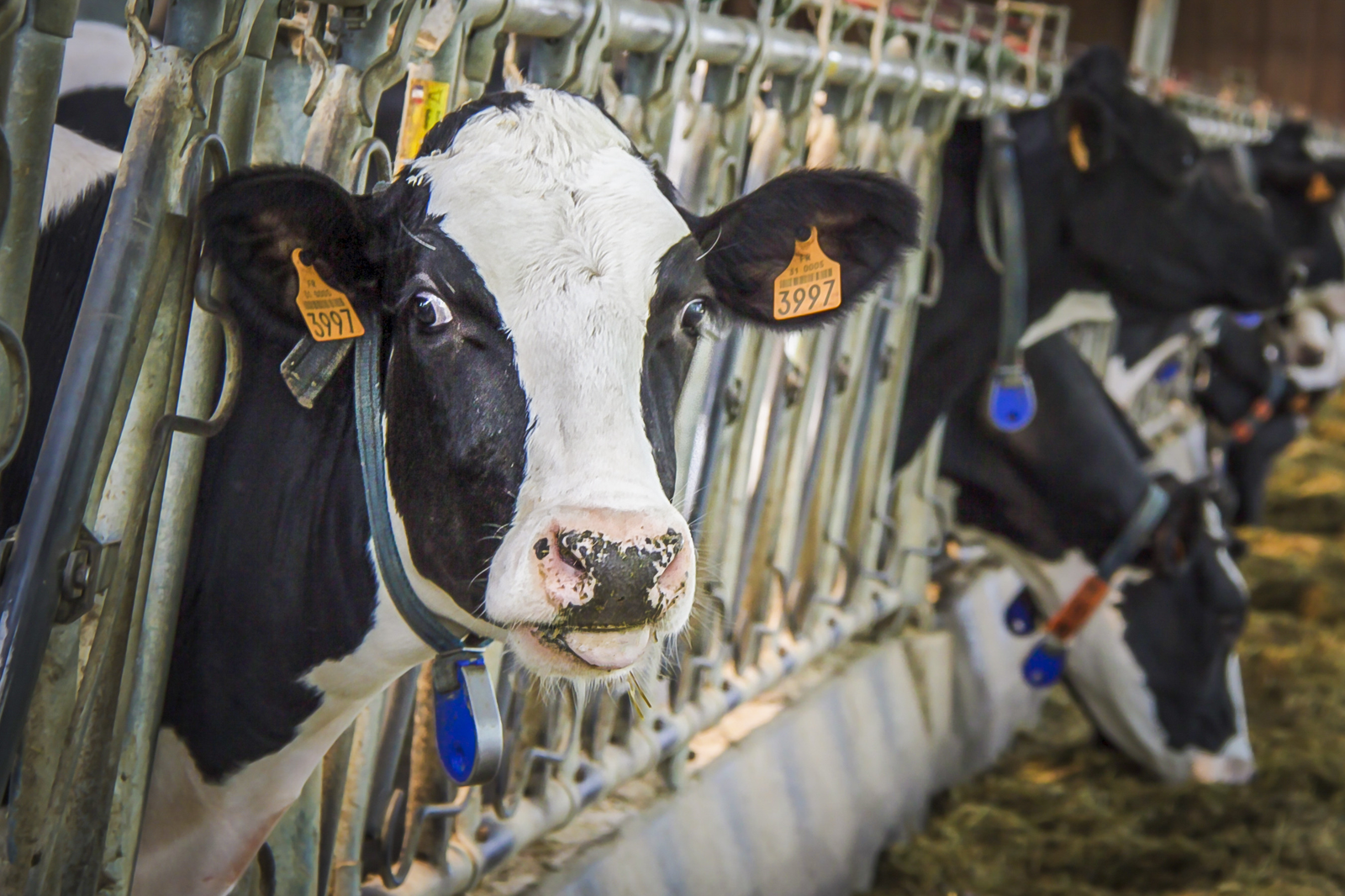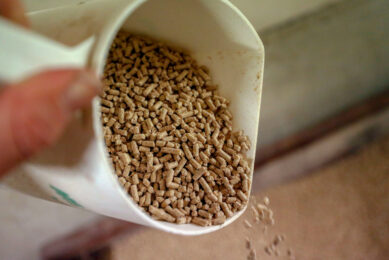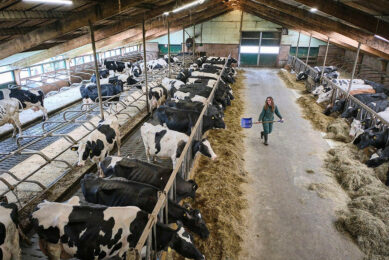Workings of the ruminal ecosystem and microbiota

Cow digestion occurs predominantly in the rumen, through fermentation by microbes rather than digestion by the animal itself. Here, a closer look at the processes taking place in this important chamber of the stomach.
The rumen contains approximately 150 billion microorganisms per teaspoon. They consist of more than 500 species of bacteria, 40 species of protozoa, 30 species of fungi, and around 6 species of methanogenic archaea. Those microorganisms digest around 70-80% of the feed through fermentation and transform it into microbial protein and volatile fatty acids (VFA). Microbial protein is the major source of protein for the cow and contributes up to 75% of the total protein supply while the VFA are the main energy source for the ruminants.
Maintaining a stable environment
In order for the rumen to be properly functioning it needs to maintain a stable environment for its microbiota with strictly defined parameters. These rumen parameters are:
Rumen pH
Rumen pH is one of the most critical determinants of rumen function particularly for the rumen cellulolytic bacteria that fail to grow at pH 6.0 and below. Rumen pH falls as a result of enhanced fermentation due to increasing concentrate in the diet. This fall inhibits degradation of the fibrous components of the diet and is the cause, in part at least, of the negative associative effects between forages and concentrates.
Controlling the rumen pH is very important for maintaining a proper balance between the rumen microbes, and to do that we use different feed additives and probiotics. But controlling only the pH in proper limits is not enough to understand what is happening on microbial level.
Redox Potential
Redox Potential (Eh) is another, more complex indicator that is directly linked to microbial growth and activity. Microorganisms gain chemical energy for growth and sustenance through electron-transfer reaction such as respiration, photosynthesis, and fermentation. Redox potential (Eh) is characterised by the electrons transfer between species in a liquid medium. Each bacterial species has optimal growth in certain Eh range, which allows us to monitor the shift of bacterial activity in a medium with mixed bacterial population.
When oxygen dissolves in a medium, like the rumen, the organic compounds present become more oxidised and the medium exhibits a positive redox potential. Just as the transfer of hydrogen ions between chemical species determines the pH of an aqueous solution, the transfer of electrons between chemical species determines the reduction potential of an aqueous solution. The presence of oxygen disturbs this process greatly by oxidising the environment. In the rumen the microbial growth consumes the oxygen and the medium moves towards a more negative redox potential. The strict anaerobes like the fibre digesting and lactate fermenting bacteria in the rumen require the medium to be kept at a very low (negative) potential (around -180mV) for their optimal growth.
Close relationship between the 2
There is close relation between rumen pH and Eh and the changes in one of those parameters leads to a change in the other. This is due to the fact that Eh depends on the type of the most active bacteria in a given moment, and the pH depends on the final metabolites of those bacteria (VFA, Lactate, etc). The both parameters show, in a different way, the rumen microbial activity and growth and they depend on the diet that is a substrate for the bacteria. A change in the diet can impact the rumen ecosystem balance, leading to a shift in the rumen fermentation and bacterial populations.
Figure 1 – Impact on rumen pH and Eh by sodium bicarbonate and yeast to cow diets.

To show the difference between Eh and pH Marden et al (2008) demonstrated that adding sodium bicarbonate to acidogenic diet increased the pH but had limited immediate impact on the Eh and microbial population. Adding live yeast instead of sodium bicarbonate, to the same cows on the same diet, induced lower Eh leading to increased growth of lactic acid fermenting bacteria and therefore an increase of the pH. In this case if we observed only the pH we could conclude that sodium bicarbonate and live yeast has the same effect, but looking at the Eh at the same time we can clearly differentiate the mode of action of the 2 products (Figures 1 & 2).
Figure 2 – The increase in the pH of the live yeast group is explained with the increased population of the main lactic acid utilising bacteria. Source: Marden et al., (2008); Pinloche et al., 2010 .

Rumen microbial balance is fragile
The cows have significant inter-individual variations in the rumen microflora balance, and thus they respond in a different way to the same diets or a diet changes. This may explain why only some animals in a heard on a same diet experience SARA.
Julien et al (2012) demonstrated that bacterial communities of the rumen of dairy cows varied with diet composition (Figure 3).
Figure 3 – Bacterial communities of the rumen of dairy cows dependant on diet. Source: Julien et al. (2012).

The diet change was form 16% wheat to 17% corn grain. 177 types of rumen bacteria were sequenced using DNA sequencing. The rumen bacteria showed high variability between the cows during the diet transition. Interestingly when probiotic live yeast was supplied to the same cows with the same diet change there were less inter-individual variability between the rumen microflora leading to stabilising effect of the live yeast on the ruminal populations.











